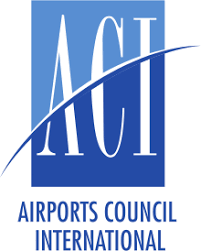 Airports Council International (ACI) World has released updated modeling showing the worsening economic impact that the COVID-19 pandemic is having on the global airport industry.
Airports Council International (ACI) World has released updated modeling showing the worsening economic impact that the COVID-19 pandemic is having on the global airport industry.
The forecasts now predict prolonged – and more widespread – traffic and revenue losses for airports across all regions.
ACI World estimates a loss of more than two billion passengers at the global level in the second quarter of 2020 and more than 4.6 billion passengers for all of 2020. The estimated decline in total airport revenues on a global scale could be US$39.2 billion in the second quarter and more than $97 billion for 2020.
Last week, ACI World and the International Air Transport Association (IATA) came together to call for urgent tax relief and direct financial assistance that is to the benefit of the entire aviation ecosystem.
This stark outlook underlines the need for government assistance for airports to preserve essential operations and to protect the jobs and livelihoods of the millions of people that work in airports around the world, says the industry group.
“The impact of the COVID-19 pandemic on airports, the wider aviation ecosystem, and the global economy continues to worsen and represents an existential threat to the industry unless governments can provide appropriate relief and assistance,” ACI World Director General Angela Gittens said.
“As traffic and revenue have collapsed, the airport industry has taken all possible measures to preserve stability, but the challenge remains that a significant portion of airport costs are fixed,” she notes.
ACI World has applauded those governments around the world that have acted to support airport jobs and operations, but time is running out for assistance to be provided, she says.
In an ACI Advisory Bulletin released on May 5, the organization labeled the second quarter of 2020 as “truly unprecedented,” with 17,000 wide bodies, narrow bodies and regional jets, or about two-thirds (64%) of the global fleet, remaining on the ground.
Traffic in most regions declined by more than -80%, with regional movement declines varying from a -90% decline in South America to a -56% decrease in North America—testament to the higher resilience of domestic traffic in light of severe restrictions on international flights, said ACI.
Even more damaging, the numbers do not paint a full picture because many airlines continue flying near-empty aircraft.
As for airports, passenger traffic volumes declined by 90% in April on a global scale, ranging from -97% in Europe to -70% in Asia-Pacific. Assuming only slight improvements in aviation activity with slow and expected gradual removal of travel restrictions in few aviation markets as we approach the summer months, the estimated passenger traffic volume decline is expected to dive further.
ACI says that the reduction of revenues for airports from the projected baseline is likely to reach -90% on a global level in the second quarter of 2020. Europe is expected to be the hardest-hit region as it may lose close to US$37 billion in revenues or more than 60%, followed by Asia-Pacific with $29.4 billion or -59%.









